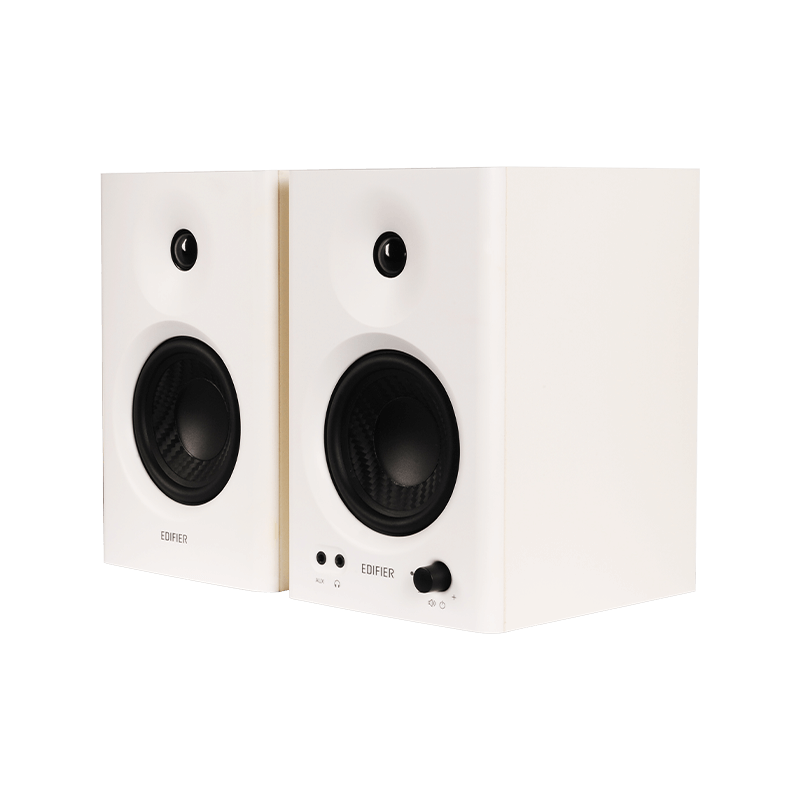Hi Guys!
I actually measured Edifier's MR4 in its early days, too.


This is what I had measured before using Klippel's equipment and software, and the FR(on-axis) of the speaker tended to be similar to what @amirm had measured.
Anyway. In the Korean audio community where I'm active, the MR4's popularity hasn't waned since then.
However, many people lamented the lack of Multitone test (by Klippel) data for this speaker,
I was able to get a relatively recent one from a member.
So let's get started!
Frequency Response

I panicked as I organized this data.
What the heck was going on...
The speaker changed.
It's incredibly flat compared to before.
I believe the product has been upgraded.
Directivity


The horizontal directivity is very smooth.


Beamwidth


Polar plot


The directivity(back and sides) isn't the smoothest, but for the price, it's forgivable.
(You can currently find them in the $50 to $60 range in South Korea).
THD
(Given the size of these speakers, I measured them at 90dB SPL instead of 95dB SPL.)


I use CHD to represent the THD% plot.
This calculates the percentage of each overtone component based on the average sound pressure from 200 Hz to 10 kHz, which I prefer for relative plots.


Compare to the passive model.


Multitone test


I wouldn't call it super clean, but it's pretty good for the price point.
(I keep emphasizing price, and since I live in South Korea, I can't help but think in terms of prices here.
Please forgive me.)
Original vs 80Hz~

Mode comparison

Multitone distortion each SPL


Compression test

Probably the limiter on the built-in amplifier was triggered.
Deviation between Active and Passive model.

Impact of Music mode.

Crosstalk test (L to R)


Finally.
THD and MD measurement data can tell you a lot about a loudspeaker.
And when we look at this speaker based on that, it's a pretty compliant speaker.
However, I did hear some pretty annoying noise from the active model when measuring this speaker.
(If you listen to music with a lot of bass, you can probably relate.)
And when I looked at the data later, it was already measured.

This is the Port nearfiled measurement data for this speaker.
As it turned out, the noise was stronger on the rear amplifier plate than on the port, but it was also measurable on the port.
And this was confirmed by the ID (Impulsive Distortion) and HOHD (High Order Harmonic Distortion) data.
These are things that may or may not be slightly detectable in THD or MD measurements, but are actually much more audible to the human ear.
Low-order harmonic distortion can be treated as timbre, but in this case it is not, so it is clearly heard as noise.
Thanks for reading this review.
I actually measured Edifier's MR4 in its early days, too.
This is what I had measured before using Klippel's equipment and software, and the FR(on-axis) of the speaker tended to be similar to what @amirm had measured.
Anyway. In the Korean audio community where I'm active, the MR4's popularity hasn't waned since then.
However, many people lamented the lack of Multitone test (by Klippel) data for this speaker,
I was able to get a relatively recent one from a member.
So let's get started!
Frequency Response
I panicked as I organized this data.
What the heck was going on...
The speaker changed.
It's incredibly flat compared to before.
I believe the product has been upgraded.
Directivity
The horizontal directivity is very smooth.
Beamwidth
Polar plot
The directivity(back and sides) isn't the smoothest, but for the price, it's forgivable.
(You can currently find them in the $50 to $60 range in South Korea).
THD
(Given the size of these speakers, I measured them at 90dB SPL instead of 95dB SPL.)
I use CHD to represent the THD% plot.
This calculates the percentage of each overtone component based on the average sound pressure from 200 Hz to 10 kHz, which I prefer for relative plots.
Compare to the passive model.
Multitone test
I wouldn't call it super clean, but it's pretty good for the price point.
(I keep emphasizing price, and since I live in South Korea, I can't help but think in terms of prices here.
Please forgive me.)
Original vs 80Hz~
Mode comparison
Multitone distortion each SPL
Compression test
Probably the limiter on the built-in amplifier was triggered.
Deviation between Active and Passive model.
Impact of Music mode.
Crosstalk test (L to R)
Finally.
THD and MD measurement data can tell you a lot about a loudspeaker.
And when we look at this speaker based on that, it's a pretty compliant speaker.
However, I did hear some pretty annoying noise from the active model when measuring this speaker.
(If you listen to music with a lot of bass, you can probably relate.)
And when I looked at the data later, it was already measured.
This is the Port nearfiled measurement data for this speaker.
As it turned out, the noise was stronger on the rear amplifier plate than on the port, but it was also measurable on the port.
And this was confirmed by the ID (Impulsive Distortion) and HOHD (High Order Harmonic Distortion) data.
These are things that may or may not be slightly detectable in THD or MD measurements, but are actually much more audible to the human ear.
Low-order harmonic distortion can be treated as timbre, but in this case it is not, so it is clearly heard as noise.
Thanks for reading this review.
Last edited:


